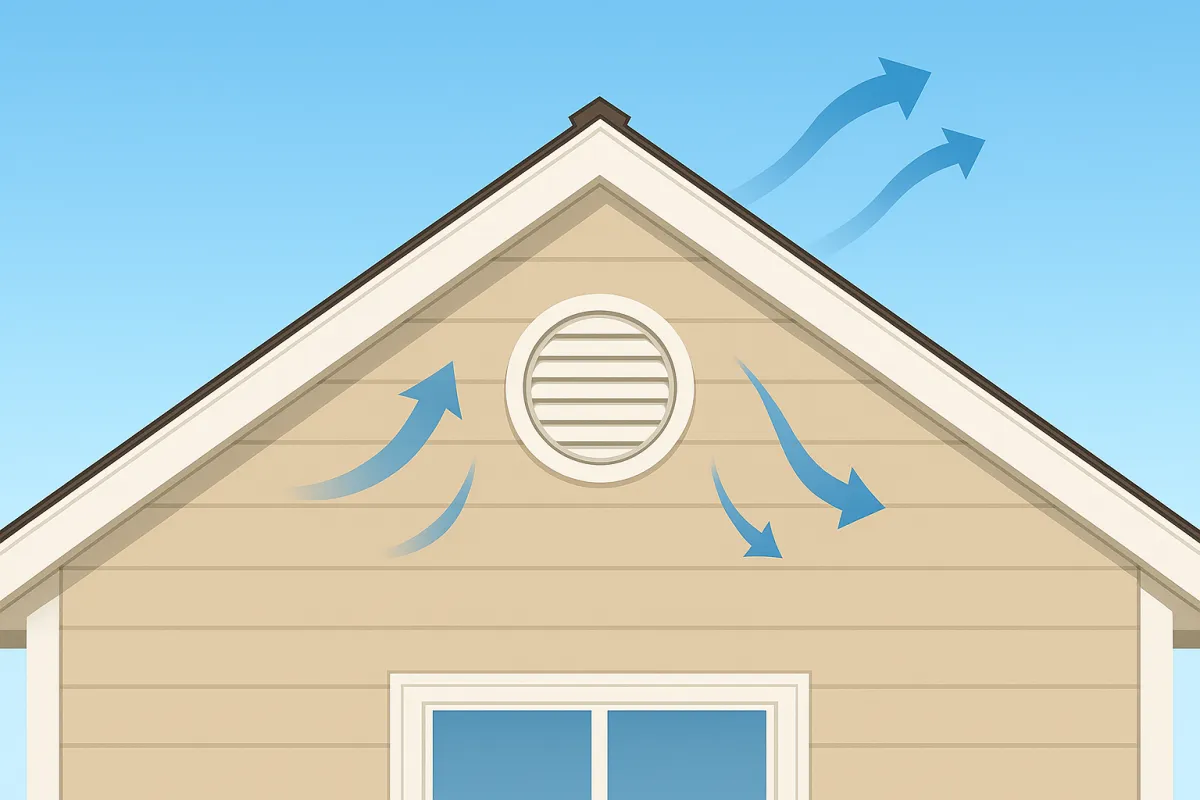
Roof Wall Vents: Improve Attic Ventilation
If your attic can’t breathe, your roof can’t live.
Introduction:
When most people think of roof ventilation, they picture ridge or soffit vents. But there's another unsung hero in the airflow system—roof wall vents (often called gable vents). Installed at the peak of gable walls, these vents improve air circulation in attics, especially when roof design or budget limits other options. In this post, we’ll break down what roof wall vents are, how they work, and when to use them.
What Are Roof Wall Vents?
Roof wall vents are louvered or screened openings installed in the exterior walls near the roofline—usually in the gable ends. They allow warm, moist air to exit the attic or draw in fresh air, depending on airflow dynamics.
Also known as:
Gable vents
Attic wall vents
Gable end vents
Benefits of Roof Wall Vents
✅ Budget-Friendly: Easy to install, especially in older homes with gable roof structures
✅ Passive Ventilation: Works without electricity or moving parts
✅ Easy to Retrofit: Great for homes lacking soffit/ridge vent systems
✅ Extra Airflow: Can complement ridge and intake vents for better circulation
✅ Aesthetic Options: Available in round, square, or decorative shapes to blend with architecture
Common Types of Wall Vents
Louvered Vents: Most popular; slanted openings prevent rain entry
Decorative Gable Vents: Match siding material for visual appeal
Powered Wall Vents: Include fans for forced ventilation (less common)
Screened Vents: Keeps out insects, birds, and debris
When to Use Roof Wall Vents
Your roof doesn’t support ridge vents (e.g., hip roofs)
You don’t have soffit or fascia vents
You’re working with older homes that weren’t built with modern attic vent systems
You need supplemental ventilation for larger attics
As a backup exhaust option when mechanical ventilation is unavailable
Best Practices
Pair with Intake Vents: Gable vents work best with proper intake (e.g., soffit or eave vents)
Install High on Gable Walls: Near the peak for maximum hot air exhaust
Protect with Screens: Prevent pests and water intrusion
Avoid Mixing Systems: Don’t mix gable and ridge vents unless airflow is properly balanced
Match Vent Area to Attic Size: Follow 1:150 or 1:300 vent-to-floor area ratio
Conclusion:
Roof wall vents are a simple yet effective way to improve attic airflow—especially in homes where ridge or soffit vents aren’t practical. Whether used as a primary solution or supplemental exhaust, they help regulate temperature, reduce moisture, and extend the life of your roof. If your attic needs to breathe, roof wall vents may be the most straightforward answer.